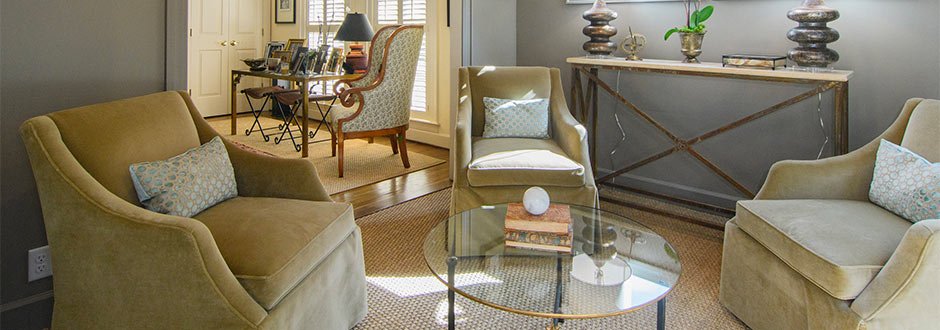Using Colors, Patterns, And Textures To Make Your Room Pop!
What makes a room pop? Is it the color on the walls or the patterns of the fabrics? Or is it a perceived texture in the space? If your room has all of the essentials and yet you still feel like it lacks interest, incorporating one or more of these options can add definition to a room. Utilizing colors and textures helps define parameters in a room and sets the overall tone for an individual space.
Planning Flow with Color Schemes
Color schemes can be used throughout your home to tie rooms together, especially adjoining rooms like a kitchen and dining room. Varying color schemes can be used to separate specific spaces without walls, like a living room and office space. Some people find that choosing a color scheme can be overwhelming, but there is one simple method you can use to start the process: First, use the darker color values along the flooring, then graduate to medium colors for the walls, shifting to lighter color values for everything at eye-level and above. This is a basic formula for replicating the natural world inside your home, as we typically walk on darker colors, live in the middle to medium tones, and look up at the lighter sky!
You can merge one space with another by carrying over a single coordinating color as an accent color that is used more dominantly in the first space, tying the two rooms together. You can also continue the same color scheme from one space into the next, but switch patterns, giving the rooms a subtle differentiation. You can use the classic color wheel as inspiration to find complimentary corresponding colors. Whether you lean more toward a warm or cool color palette, a color wheel is a great tool for selecting a color scheme for both casual and formal spaces.
Modern Mix and Match
Patterns can bring a room alive! In the past, rooms usually consisted of one pattern. Living room curtain patterns matched the lampshades, which matched the couch, which matched the pillows, which matched whatever else had a pattern in the room. But now the goal of using a pattern is to complement and coordinate with the mood you want in your space. So take some time to consider what type of feeling you want your space to convey. Do you want a floral French countryside feeling? Or more of an earthy feel with rich jewel tones? Do you want a modern, cool aesthetic? Or are you picturing a preppy, Nantucket type of atmosphere? The options are endless when choosing what overall style is best for a room, and that gives you the choice of using multiple patterns in your room. Dissimilar patterns can complement one another if they consist of the same hues; just make sure to add an occasional solid piece to give your eyes a break from the continuity of patterns.
Textures for Interest
Textures are also a great way to add depth and feeling into your home. Options range from architectural elements such as crown molding or chair rails, to furniture, décor items, or various floor and wall coverings. You may find an imperfection in your room that you want to mask, and by adding texture to that area you can conceal flaws, and no one will be the wiser. Textured walls in the kitchen, such as a backsplash, can give either a large or subtle pop to your space. While a patterned wall tapestry can draw attention as the focal point in your living room.
So whether you want to add visual weight to your room, or provide a balance between your color palettes by adding a bit of texture or a pop of color, you can instantly transform an area, ultimately transforming a well-designed house into the perfect home.


